Below are some pictures of the undercarriage of a 2008 ford crown
victoria police interceptor. When these pictures were taken, the
vehicle in question was around 1 year old.

Here's a picture of the aluminum suspension subframe with the steering
rack attatched.
Also visible in the picture is the lower portion of the front engine
accessory drive. Starting in the 2006 model year, ford introduced the
FS-18 air conditioning compressor. Earlier 2003-2005 crownvics used a
scroll compressor instead.
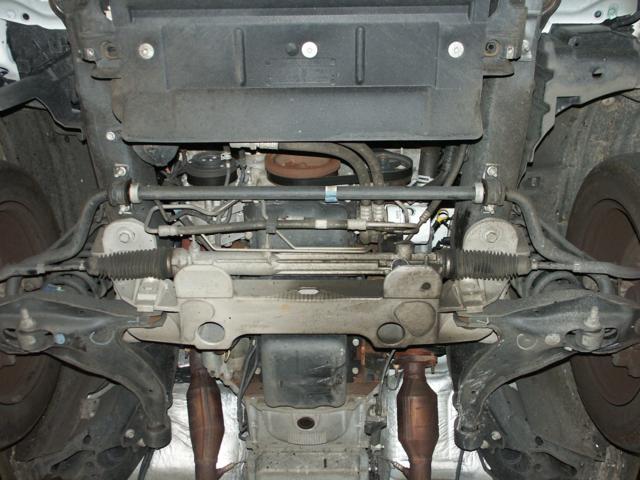
Yes, that's an aftermarket siren installed above the radiator. But this
car is in active duty police use, so no problems with the law. lol:) 

Starting in the 2006 model year, the transmission cooler was integrated
into the lower portion of the air conditioning condensor. The external
cooler in front of the condensor is for the power steering system.
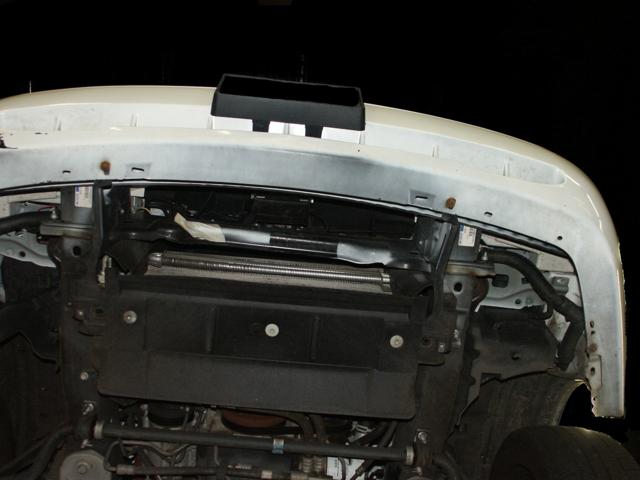
Part way into the 2006 model year, police interceptors recieved steel
lower control arms. The earlier 2003-2006 crownvics had aluminum lower
control arms instead. Service parts literature lists the transition
date from aluminum to steel as 12/05/05.
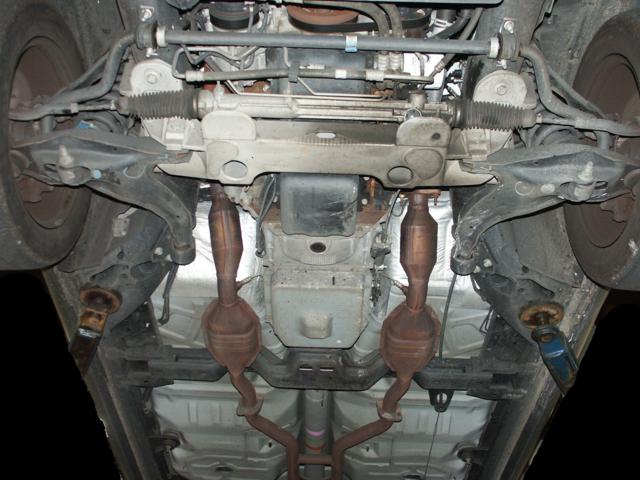

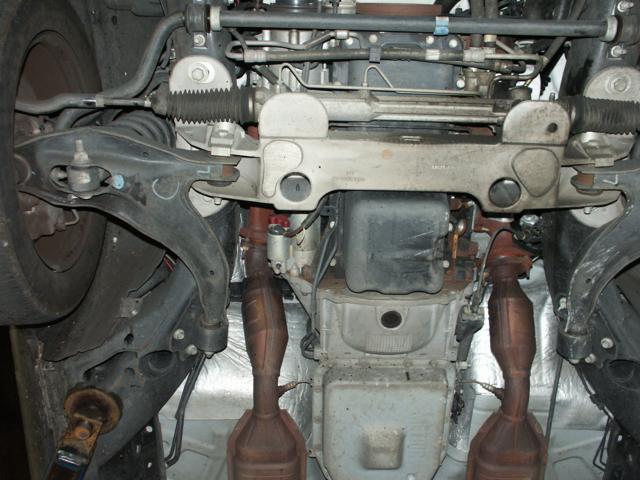
The engine starter motor is much easier to access in the 2003 and later
crownvics than in the 1992-2002 cars. No longer do you need a foot or
two worth of wobble bars to access the bolts.

The routing of the starter wiring changed in the 2005 model year. In
the later cars, the starter wiring runs along the passenger side oil
pan fasteners. In the pre-2005 cars, the wiring ran along the
passenger's side valve cover and down the back of the cylinder head to
get to the starter.
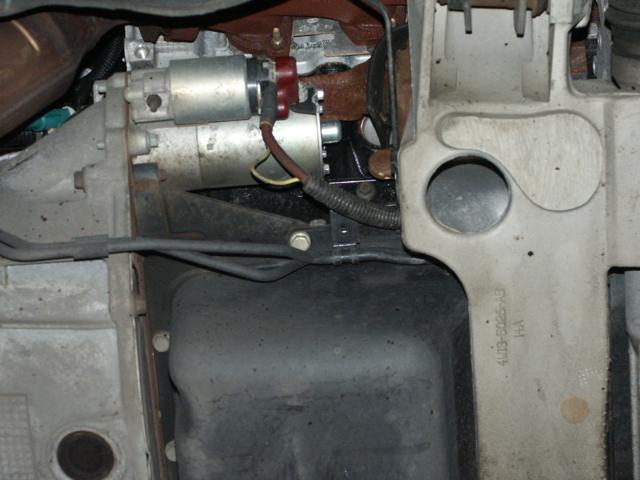
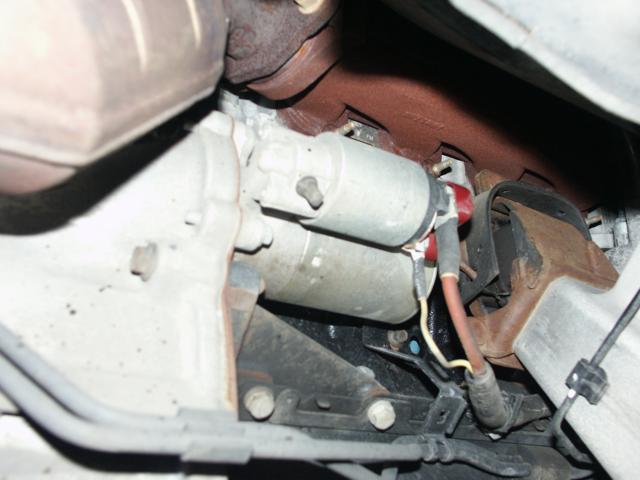

One issue with the new front suspension design is that oil pan is not
as well protected as in the pre-2003 cars. There have been reports of
2003+ crownvics with less than a thousand miles on the odometer needing
a new
engine installed due to oil startvation from a mangled oil pan. This is
considered collision damage by ford and is not covered under the
factory powertrain warranty.


From this angle, the air conditioner accumulator is visible. This part
is located on the passenger's frame rail in between the front of the
engine and the radiator fan where the suspension idler arm used to be
in the pre-2003 cars. Being this close to the ground, the accumulator
is exposed to lots of road splash. This is not too bad a thing if the
road splash is just rain water, but northeastern united states road
splash contains a highly corrosive mixture of chloride road salts
during the cold wintertime months too.
Accurate diagnosis of accumulator refrigerant leaks can be confusing
for some mechanics because the accumulator is located very close to the
radiator and the a/c refrigerant leak tracer dye is a bright
fluorescent green color like many engine cooling system antifreezes.
This can lead to a person thinking that their crownvic has a leak in
the radiator or one of the engine cooling system hoses, when the engine
cooling system is actually leak free and the true cause of the bright
green drops on their driveway is a leaky a/c accumulator.

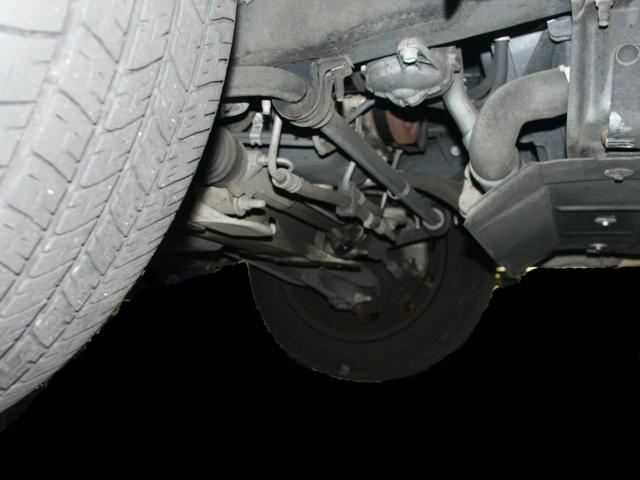
Starting in the 2003 model year, ford also redesigned transmission
crossmember. This unit is designed to be really stiff for reduced
passenger compartment intrusion during side impact collisions.
This is a press fit crossmember that is really wedged into the frame.
Many service technicians report using 3 foot long prybars to get enough
leverage to remove this part.

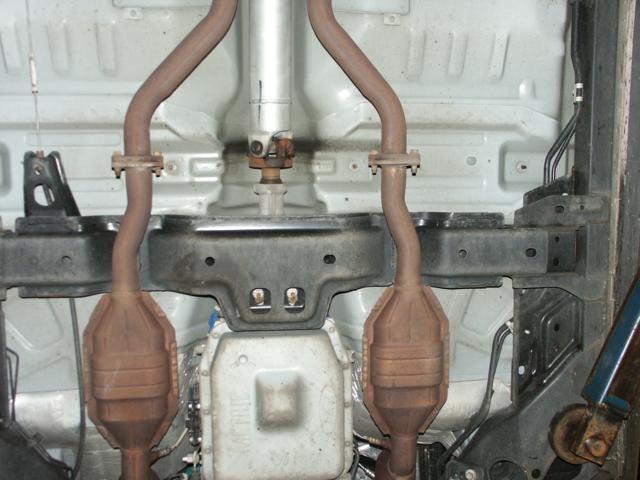
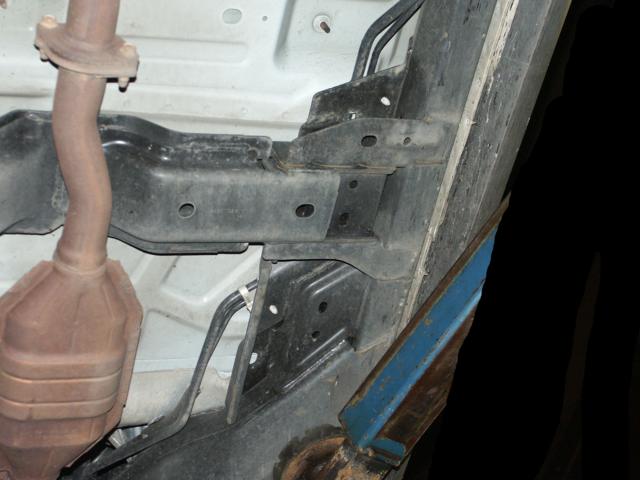
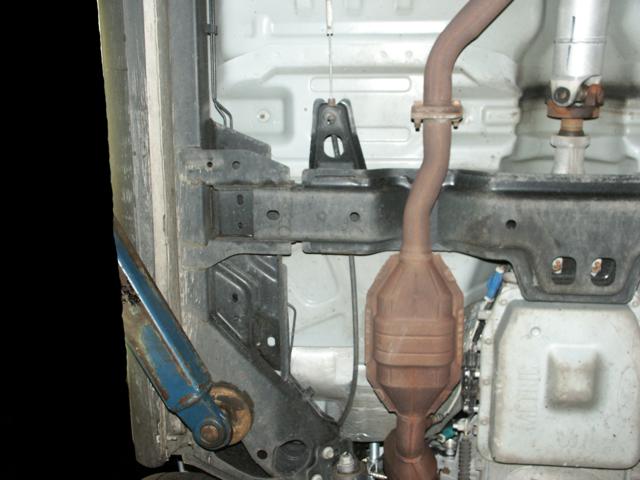
You need to remove the e-brake cable before you can remove the
crossmember.
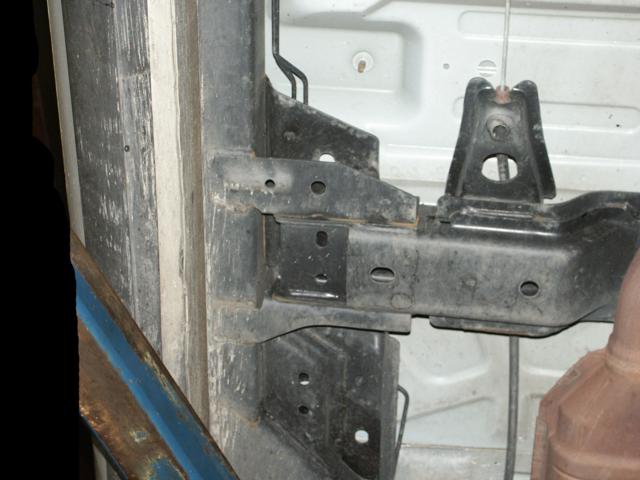
Each side of the crossmember has two thru bolts attaching it to the
frame
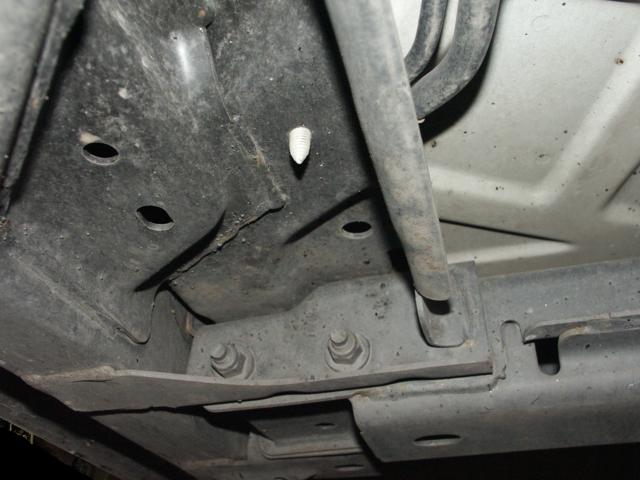
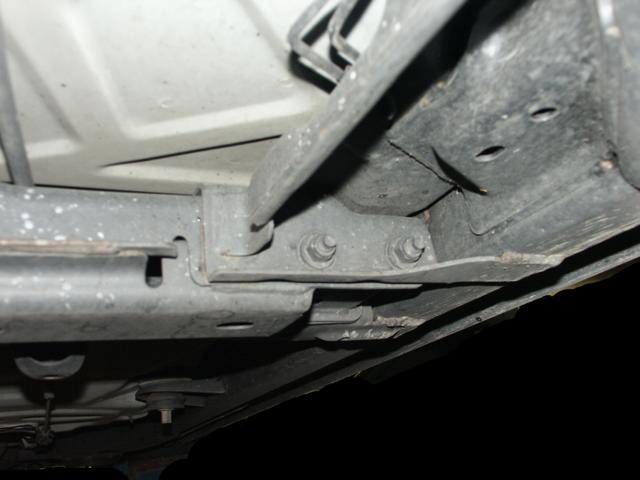


You also need to remove the catalytic converters before you can remove
the crossmember
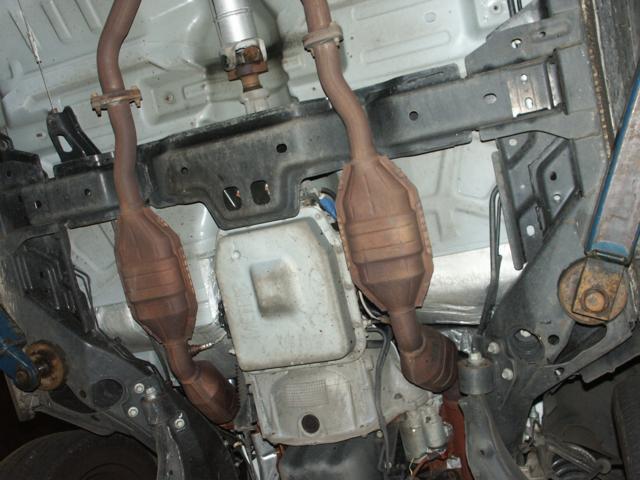
The floorpan under the front passenger's seat remained essentially the
same between the 1990-2002 cars and the 2003-2010 cars. This is really
convienent if you want to install newer seats in your older crownvic.
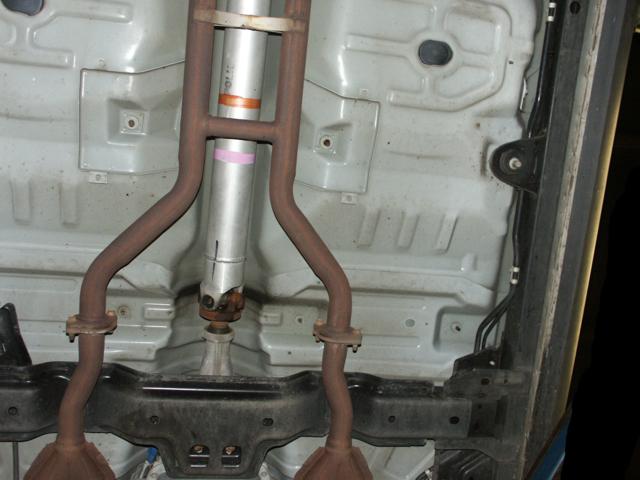
The driveshaft has color bands on it for identification purposes when
the vehicle is being manufactured.


Here's a closeup of the rear swaybar.
Also visible in the picture are the rear seat belt crash brackets.
Starting in the 2003 model year, mounting hooks were added to the lower
portion of the seat to accomodate LATCH equipped
child car seats too.

The mufflers hangers in the 2003+ cars were completely redesigned. The
fuel filter remained essentially unchanged though.

The two small holes in the muffler allow water to drain out of the
exhaust system. A crownvic with it's engine running and a good working
set of catalytic converters can generate a suprising amount of water in
the exhaust pipes as it idles. And yes, those two holes are ford
factory installed, they were not drilled into the mufflers by a
mechanic after the car was manufactured.
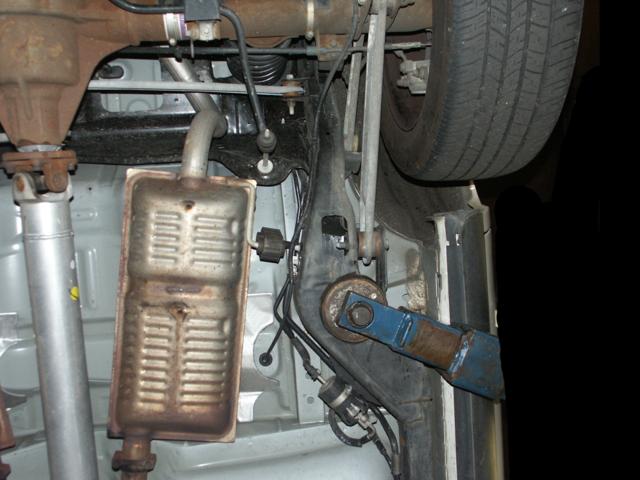
Here's the evaporative emissions charcoal canister on the trunk floor.
In some rural police
departments, you'll find these components ripped clean off the floor
from offroading adventures. It can be a frustrating expierence for a
person to purchase a pre-owned police cruiser from auction, only to
find a couple hoses hanging loose under their trunk floor and have a
check engine light on their dashboard that won't go away.
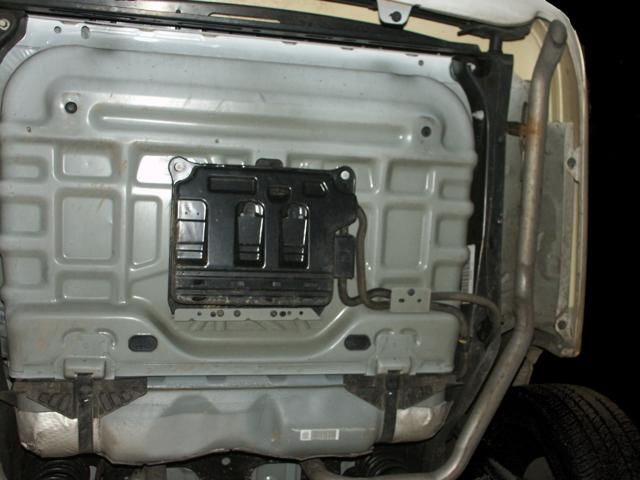
The fuel pump is easier to access with the exhaust pipes being routed a
little differently.

Starting in the 2003 model year, the shock absorbers were relocated
outside the frame rail.
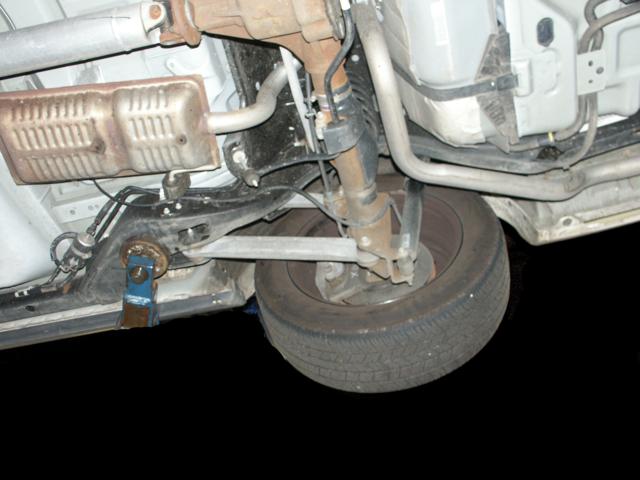
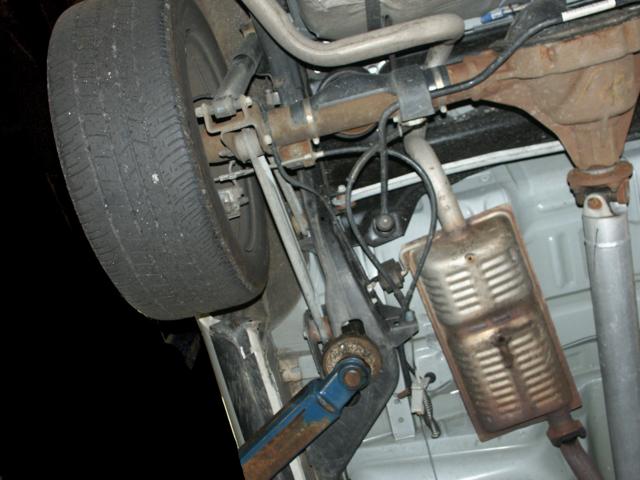
The e-brake adjustment mechanism is essentially a re-run of previous
model years.
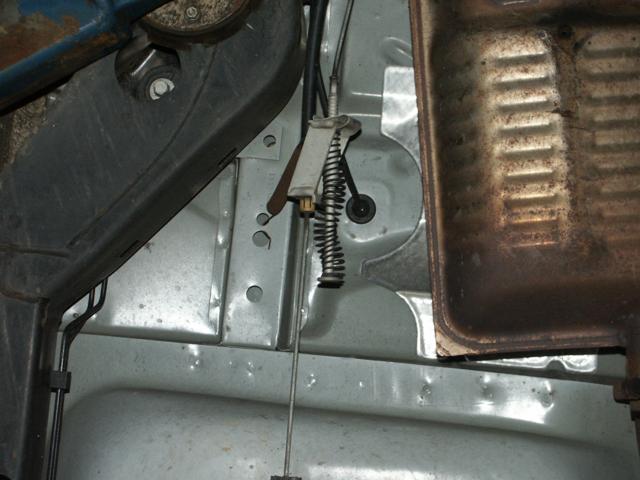

This vehicle is relatively new and still has the suspension spring tear
tag on it. This tag lists the spring rate and load along with some
other info.
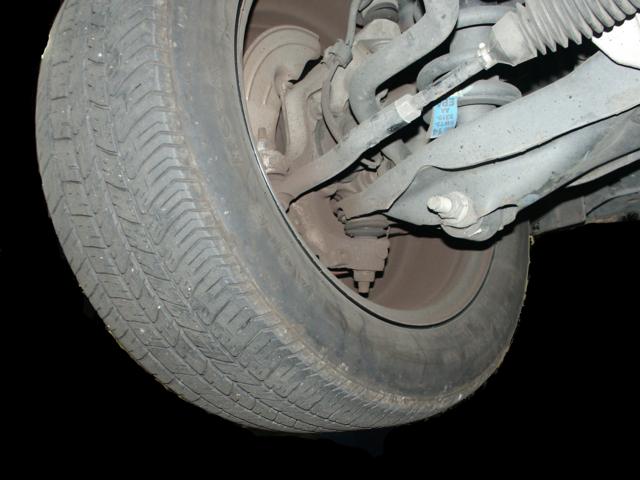
Notes:
-These pictures were taken with crown victoria internet discussion
forums in mind. It's sometimes really difficult to describe an issue
without good pictures of the parts in question. And taking good
pictures of undercar parts can be really difficult for the a casual
shadetree mechanic. For these pictures, tools were used that many
backyard mechanics don't have including: a high-end DSLR
camera, a commercial 2 post shop lift,
and
lots
of overhead lighting.
-This car has factory installed white paint. Regardless of which color
the upper body panels are repainted with paint, the car will always
remain white underneath. This is convienent if you're shopping for a
"pre-owned" police cruiser. If the color of the underbody panels
doesn't match the paint on the doors, roof, trunk, etc then you know
that the car has been repainted at some point previously.
-There has been some talk about corrosion. This is a really complex
topic that you can find numerous engineering books written about. But
in an oversimplified sense, there are a few different corrosion
enviroments scattered around the united states.
--The "Rust Belt Car". The winter in these areas gets cold and lots of
rock salt and sand are used to clear snow/ice from the roadways. The
salt greatly accelerates the rate at which exposed metal corrodes. Lots
of abrasive debris is present during the winter from airborne ice
particles and sand. The summers in these areas are often rather humid
too.
--The "Southern State Car". The winter in these areas is relatively
mild. Road salt is not used, but the roads are sanded in some
locations. Cars in these states will get light surface rust but nothing
like the heavy scaly rust that you'll get in the salt belt. The summers
in these areas are sometimes longer and more humid than the rust belt
states.
--The "Desert Car". For corrosion to take place, water is required. In
an dry arid enviroment like phoenix arizona, metal parts are unable to
rust due to lack of water. Plastic and rubber parts often have a rather
short life in such an enviroment. Air conditioning system parts often
don't fare much better in these high heat enviroments either.
-This car has been a "rust belt" vehicle it's whole life. But it's only
a
little over a year old, so negligible corrosion is present underneath.
The sandblast effect of road debris on the paint coatings is negligible
too since the car only has around 20k miles. Being a police
interceptor, this vehicle has close to 2000 hours of idle time already,
but this mainly effects the powertrain parts rather than body parts.
One thing that will never change is that corrosion takes time. Even
without any paint, a thick peice of metal won't turn into crumbly rust
flakes overnight, this process will take years.







































